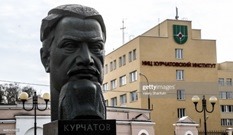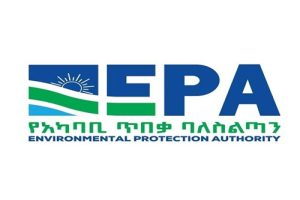
BY WORKU BELACHEW
Three decades after the banning of a nuclear testing site, Kazakhstan still contends hard with the consequences. The impact is expected to stay more generation before the surrounding areas could be declared free from it. This leaves a good lesson for a country like Ethiopia that is looking for new ways of developing energy to assist its rapid economic development. Countries should make careful studies before making choices as to which source of energy to invest in.
Our environment provides us all with what is important for a safer life. But we must not forget that the decision to wisely use the environment rests in our hands.
By and large, in the modern-day, we have been doing all kinds of devastations to the environment. Particularly, international relations seem to be highly responsible for this. The deadly race to acquire weapons of mass destruction says it all. Trying to secure one’s national interests must not supersede the rights to live in a safer environment. And these rights do not only apply to humanity but they also work to all creatures, aren’t they?

Despite this fact, most politicians of our world are still reluctant to take tangible measures to make our world free from the dangers of weapons of mass destruction, mainly the creation of a nuclear-weapon-free world seem a far-fetched ambition. It is now over half of a century since leaders started to put efforts towards this end but to no avail.
A UN Non-Proliferation Treaty (NPT) was opened for signature in 1968. And the NPT entered to force in 1970. Though the treaty had been for a limited period of 25 years, it was indefinitely extended in 1995. It is also believed that some states even acquired nuclear weapons after the NPT entered to force, and the aspired ‘ultimate elimination of nuclear arsenal’ looks like an empty promise.
But despite such discouraging efforts, a country in Central Asia has put the example to all nuclear states to follow suit. On August 29, 2021, Kazakhstan marked the 30th anniversary of the closure of the Semipalatinsk Test Site. The site hosted devastations of all sorts during the soviet time. It served both as an atmospheric and underground test site for over 40 years. The land, underground water, surface water, and air of the test site are still unsafe 30 years after the closure.
Brief background
Semipalatinsk Polygon first came with a cover name, ‘Training Proving Ground No.2’, located on 15, 155 sq. km in the steppe in northeast Kazakhstan. The test site had been expanded to a large-scale one and complex enterprise during the time the first nuclear test was conducted in August 1949. The place included areas of residence, administration and experiment.
The residential area since then is called Kurchatove, taking its name after a great USSR scientist who also supervised the testing in 1949-1955. Until its closure in 1989, the test site was said to have seen 456 nuclear test explosions, 340 underground, and 116 aboveground.

A crew of journalists, including this writer, went to get firsthand information about the devastation created as a result of various nuclear testing and experimentation in Semipalatinsk later this August. Tribute to the first Kazakh President Nursultan Nazarbayev, by his decree, the site was closed in 1989 to enable our environment not to see more damages. He has taken a great step that other nuclear-weapon states can take this lesson. This leader puts humanity well above a mere race to assure national hegemony through acquiring a nuclear weapon.
What is the Nazarbayev manifesto?
“In the 21st Century, we all need peace. This is a key mission of our time.” The living legend Nazarbayev has put it in his five-paragraph manifesto, called Manifesto: The World. The 21t Century He said: “The world leaders must stop the threat of deadly war by listening to reason.”
He actually made a tough decision in closing the test site and becoming a true man who prioritized protecting our world for future generations. Kazakhstan has proven that progress and peace are achievable without a nuclear weapon, disassembling the world’s 4th nuclear arsenal. Today the world marks August 29 as International Day against Nuclear Tests that were exactly Kazakh’s great contribution towards the creation of a safer world.
Kazakh is the leading economy in Central Asia. Its population is extricated out of poverty and is working for achieving the third package of political reforms that includes but is not limited to further institutional development of the political system and enhancing the mechanism of the protection of human rights. Surely the future generation would pay homage of unprecedented level for this nobleman.
How safe is the Polygon today
It is tough to tell. But, the radioactive elements still exist. One has to wear a mask to visit a test site called ground zero. Experts from the Kurchatov research center say that the alpha ray can easily be carried with dust and one may inhale it which in turn affects the breathing system.
The Gama ray and Beta Ray may find one’s clothes and hands. At Ground Zero the crew of journalists was taken by car and visited the place. But it is strictly forbidden to walk on places other than those designated pathways. For instance, if one walks to a restricted zone and a radioactive meter detects an amount over the average on his/her shoes, then he must leave his shoes behind and go back on bare feet.
At another site called Atomic Lake, the crew had to walk with plastic shoe covers and masks. The lake was created with an attempt to use a nuclear blast to create an artificial lake. But the experiment ended up contaminating the water; the water may not be used for the next hundred years as well.
A glimpse to the devastation on lives Exposure to radioactive radiation is said to have affected the community living in the test site area in various ways. Imagine the sites saw 116 above the ground nuclear detonations that are said to have a combined power of more than 400 times the bomb dropped on Hiroshima A study by Sviatova, G. S., Abil’dinova, G. Zh. & Berezina, G. M. ascertained that “Women near the Polygon who were exposed to radiation were more likely to give birth to children with chromosomal diseases, including Down’s syndrome and congenital disabilities” as quoted by Wudan Yan in his 2019 article.
We have also visited the devastation on infants, animals, and plant life. We also visited the Museum of the Medical Institute in Semei town. The damage to the human brain, abdominal cavity, infants, skin… was despicable. Pertinent information from Kazakh government sources shows that over 1.5 million people were said to have been suffering from the horrors of nuclear testing.
Future of the testing site
Still, the government of Kazakhstan is cooperating with Russia and the US in its efforts to clean the testing area and tunnels. Obviously, it takes generations to make The Polygon free from radiation. Yet the Kazakh government takes the matter seriously from the angle of terrorism as well. If the substances in the areas can undergo the appropriate chemical processes, it is possible to produce a nuclear weapon. This means if the substances fall into the hands of terrorists, the risk is very high. Due to this, the government of Kazakhstan is working ardently to preclude such a scenario from happening.
Yet, it may take a century to make the place free from radiation.
Sources show around 2000 nuclear device detonations held since the first one with a code name ‘Trinity’ by the Army of the United States on July 16, 1945, at 5:29 a.m. We have enough of the devastations. What we should look for is to practicalize the treaties on non-proliferation and nuclear disarmament for the sake of humankind.
The Ethiopian Herald September 2/2021




